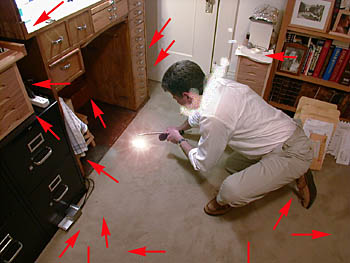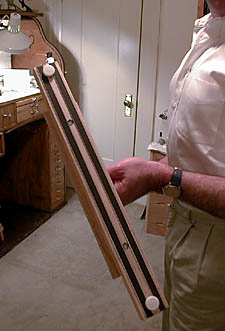|
||||||
TZWS Class: Level 1 - Lesson 1 - Part 1 ON THE IDEA OF CRAFT AND WORKMANSHIP In the modern world of every man's
throw-away timepieces, it is difficult to remember that the earliest watches were expensive rarities that imparted great social power to their owners. To know the time put one in a position of dictating social structure
and the behavior of those who did not have access to the information. Thus it was appropriate--for social reasons, as well as the best possible mechanical function--that craft-for-craft's-sake be lavished
upon these early watches. Precious metals, gemstones, pearls, and the addition of other discrete crafts, such as enameling, added value, beauty, and prestige to
the mechanical craft within. But good, honest craft has always required that the craft within be equal to or better than the craft exhibited on the outside. This
means that both manufacturer and watchmaker much lavish attention on parts of the watch almost surely never seen by the average owner.
Craft and workmanship are not only issues in the manufacture of wristwatches, but in their service too. It is a fundamental assumption of the curriculum of the
TimeZone Watch School that every adjustment or servicing of a finely-made wristwatch provides an opportunity to admire, respect, and preserve the craft with which the piece was manufactured--and, sometimes, even to improve upon
it in appropriate ways. All too often, unknowledgeable or unskilled workers, or skilled professional watchmakers under the pressures of time and money, fail to
pay this respect and leave behind unhappy reminders of their work. While each worker must decide on his own approach to craft and workmanship, the best possible approach must always be the reference point.
Because the TZWS offers a curriculum designed largely for those who would be amateur watchmakers, it is hoped that the spirit of fun, experimentation, and learning will be maintained throughout. Our early work, on
inexpensive movements, is an opportunity to make the inevitable--absolutely necessary--mistakes from which we learn. Mistakes, frustrations, and setbacks will be part of the experience and should, as nearly
as possible, be expected and taken in the spirit of learning. Watches--excluding complex pieces like repeaters, chronographs, and perpetual calendars--are actually very simple mechanical devices. They are, however,
very tiny and much of our learning will be in the handling and manipulation of very In the illustration below
, the author may be observed with a flashlight, magnetic pickup, and an expensive Swiss cigarette searching for very tiny parts (at the red arrows ) that he will never find.
After an hour of futility, he left his horological enterprise for another day and had a Cognac instead.
Before leaving the matter of the Bermuda Triangle, I would offer a useful suggestion. Invest an hour and US$20.00 to build your own Triangle Sweeper. This may be constructed from a magnetic tool or knife rack attached to a wood broom handle. Remarkably, in supervised tests the TS retrieved seven of seven very tiny screws strewn randomly around the author's inadvisedly carpeted workshop. (During the test, it also sucked up a Boeing 737 and a fishing trawler, but that is a discussion beyond our purposes here.) The TS will not help with jewels, brass parts, or other non-ferrous materials, but it is, all in all, a big help to even the most skilled watchmaker. We need all the help we can get.
|
||||||
Copyright © 1998, Power Reserve Inc., All Rights Reserved |
||||||

Back to top of page | Return to Time Zone Home Page
Copyright © 2001-2004 A Bid Of Time, Inc., All Rights Reserved
E-mail: info@TimeZone.com

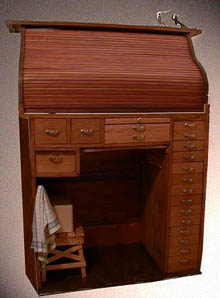 Because they are micro-mechanical devices, watches have always been demanding of some craft and workmanship for purely functional reasons. Without a certain attention to detail, a watch simply would not work. Beyond that pragmatic
requirement, there is a huge range of craft and workmanship devoted to watches, both by their manufacturers and by those who service and regulate them for the owner.
Because they are micro-mechanical devices, watches have always been demanding of some craft and workmanship for purely functional reasons. Without a certain attention to detail, a watch simply would not work. Beyond that pragmatic
requirement, there is a huge range of craft and workmanship devoted to watches, both by their manufacturers and by those who service and regulate them for the owner. 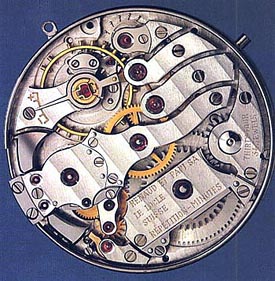 In the contemporary industrialized world, with more of a focus on
productivity and function than on craft, the average person sees little of great craft. Certainly, highly specialized mechanisms for professional uses--medical tools and instrumentation are one example--still exhibit craft of
manufacture. Among consumer products, however, the fine wristwatch stands virtually alone. High-grade Swiss and German mechanical watches are among the very few manufactured products today that exhibit craft of the caliber
seen routinely in previous centuries. If not available to the average person, such watches are certainly available to a large number of somewhat more privileged citizens of industrialized nations.
In the contemporary industrialized world, with more of a focus on
productivity and function than on craft, the average person sees little of great craft. Certainly, highly specialized mechanisms for professional uses--medical tools and instrumentation are one example--still exhibit craft of
manufacture. Among consumer products, however, the fine wristwatch stands virtually alone. High-grade Swiss and German mechanical watches are among the very few manufactured products today that exhibit craft of the caliber
seen routinely in previous centuries. If not available to the average person, such watches are certainly available to a large number of somewhat more privileged citizens of industrialized nations. 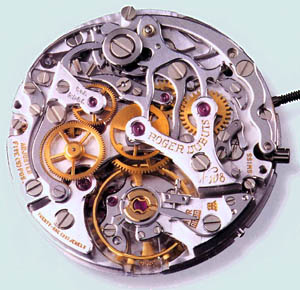 ON LEARNING AND HAVING FUN
ON LEARNING AND HAVING FUN 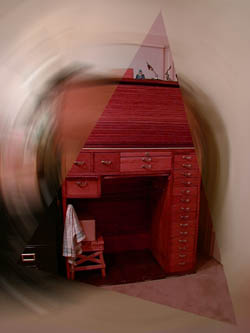 small parts. Half the skill of watchmaking is about simply learning how to hold very small parts while they are worked upon without
damaging them or losing them. While learning, everyone will do both. The other half is probably about finding pieces once they have flown from your grasp. Every watchmaker's bench exists within the Bermuda Triangle.
There is simply nothing to do about that but come to peace with it. Parts almost never return from the Triangle. Time, practice, and patience provide dramatic improvements in the ability to handle
small parts with facility. When work becomes too frustrating at some point, simply walk away from it and return when fresh and in a more recreational mood. Watches never respond to force.
small parts. Half the skill of watchmaking is about simply learning how to hold very small parts while they are worked upon without
damaging them or losing them. While learning, everyone will do both. The other half is probably about finding pieces once they have flown from your grasp. Every watchmaker's bench exists within the Bermuda Triangle.
There is simply nothing to do about that but come to peace with it. Parts almost never return from the Triangle. Time, practice, and patience provide dramatic improvements in the ability to handle
small parts with facility. When work becomes too frustrating at some point, simply walk away from it and return when fresh and in a more recreational mood. Watches never respond to force. 